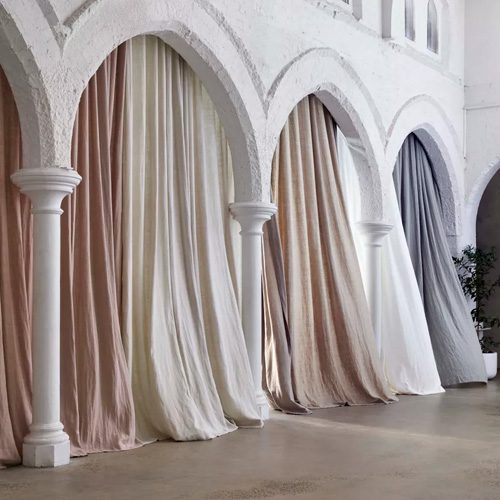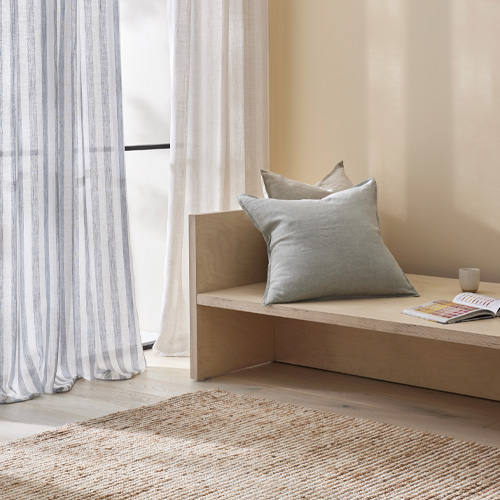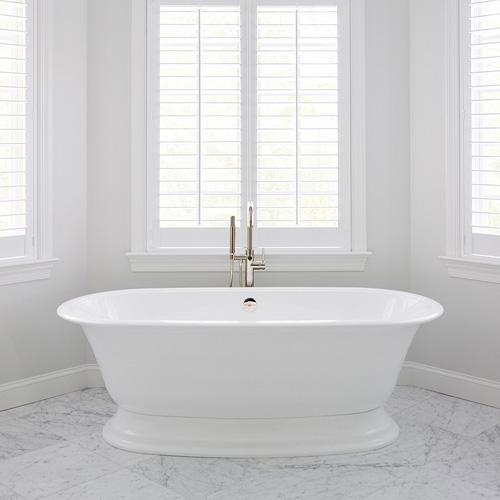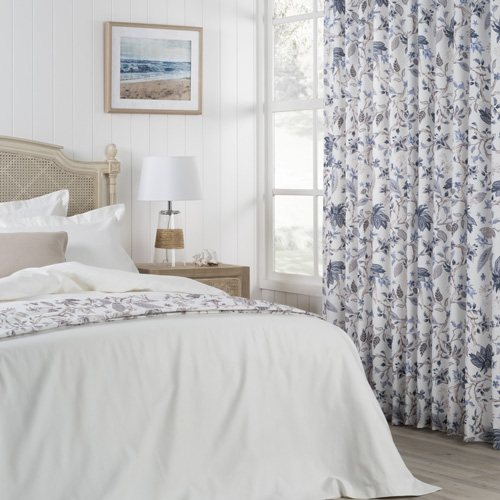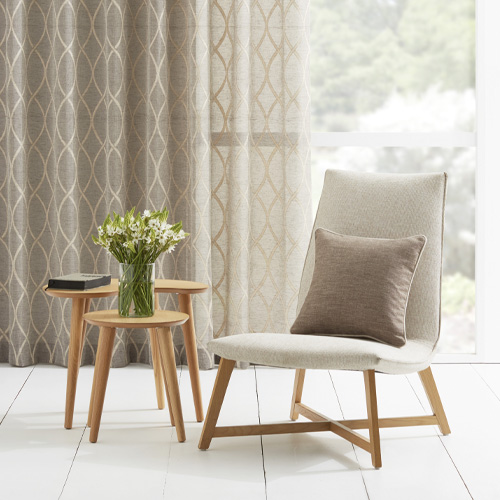(The first in a three-part series)
Do you know the feeling? You dress your child, step back and take a look. As your eyebrows rise involuntarily and a strained smile spreads across your face, you think, “Whoops! Got it wrong today.” You chose an outfit that misrepresents your child’s personality, perhaps stifles their potential or even inhibits their function and movement. Similarly, every room has a unique personality, potential and purpose. Today, we’ll explore how different rooms require different types of curtains.
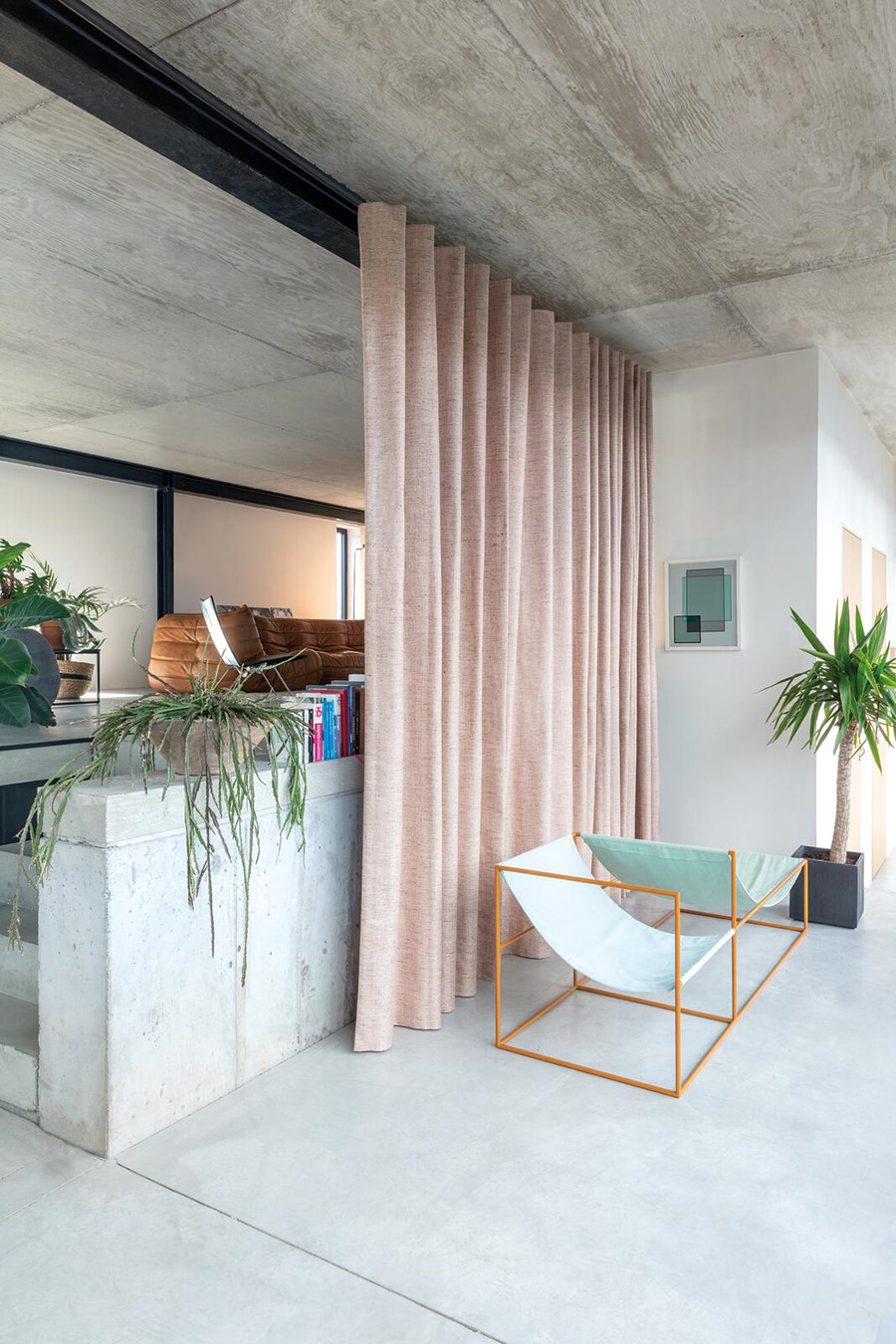
While a quick outfit change will rescue you and your child from social embarrassment, correcting a curtain blunder is not so easy. This article will help you get it right the first time.
There is much to consider, and certainly more than we can cover in a single article. Therefore, this is the first of a three-part series. Today, we’ll lay some helpful foundations. Specifically, we’ll introduce you to:
- Curtain design goals that are common to almost every room
- Some focus areas for curtain design
- Choosing bedroom curtains
- An introduction to selecting curtains for a child’s bedroom
In our next article, we’ll factor moods into the decision making process. We’ll take a more in-depth look at kid’s curtains, and we’ll select curtain types for active spaces and rooms with a view. In article three, we’ll wrap up our design-by-room-type study. We’ll look at kitchens, lounge rooms, bathrooms and laundries.
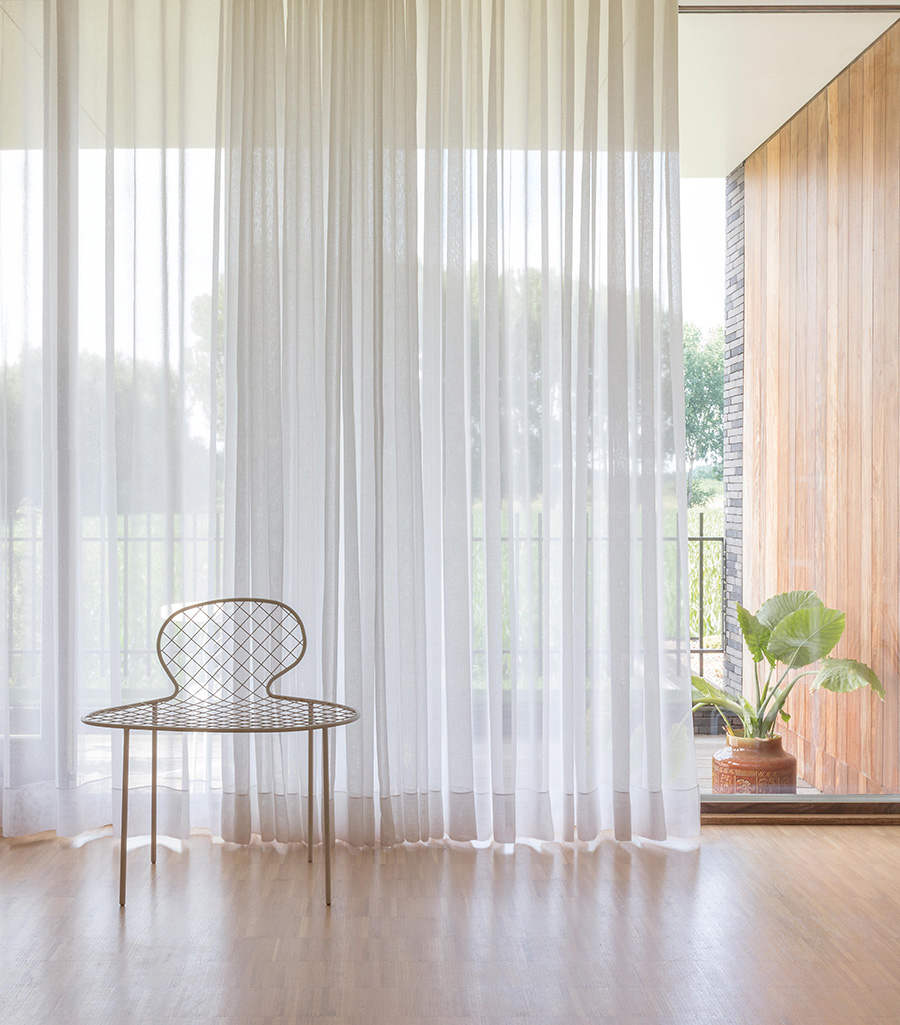
Curtain Design Goals for Almost Every Room
Your intention is to select the best types of curtains for every room. You want to present every room in the very best way possible. That’s our goal as well. Therefore, it’s wise to start with the end in mind and be very clear about your intentions.
After years of working in different homes, styles and locales, we’ve realised that some goals apply in almost every circumstance – and virtually every room. These include:
- Practicality
- Functionality
- Lasting beauty
- Engaging style
- A sensible price
To achieve these goals, we approach different rooms differently, much like a parent approaches the needs and raising of different children. Flexibility and perceptiveness are required because a ‘one size fits all’ solution does not exist.
Just like different children in a family, each room has unique dynamics, perspectives and personality. Therefore, when proposing different types of curtains and blinds, we make our recommendations like an experienced nanny; one who’s seen a thousand families function, with innumerable variations of child-type.
We bring this know-how, these resources and invaluable experience. We also apply a trained eye – a focus if you like – that allows us to work with you to effectively achieve your goals.
Focus Areas to Help You Choose Between Different Types of Curtains
As an introduction, the following list is reasonably comprehensive, but it’s certainly not exhaustive. These 12 focus areas can help you shift your attention from factor to factor. Like parenting, shifting focus can help you see what’s really happening, rather than what’s merely on show.
When deciding the best types of curtains and blinds for your room(s), consider these 12 focus areas:
- Safety
- Privacy
- Light blockage
- Airflow desires
- Mood preference
- Cooling intentions
- Heat retention aims
- Style and aesthetics
- Daytime practicalities
- Cross-season intentions
- Functional practicalities
- Model and feature preferences
Unpacking this list is not today’s goal, but by considering the headings, you might avoid a curtain or blind blunder (if you’ll pardon the pun).
Can you see the challenge? Considering all 12 focus areas is not easy. Besides this, there are also unique aspects to every home and family, and these might significantly impact your curtaining solution.
If you know you’d like some one-on-one help with all this, or you’ve got a question, call us on 0411 557 622. If not, read on as we consider what it looks like to apply these focus areas within some sample room types.
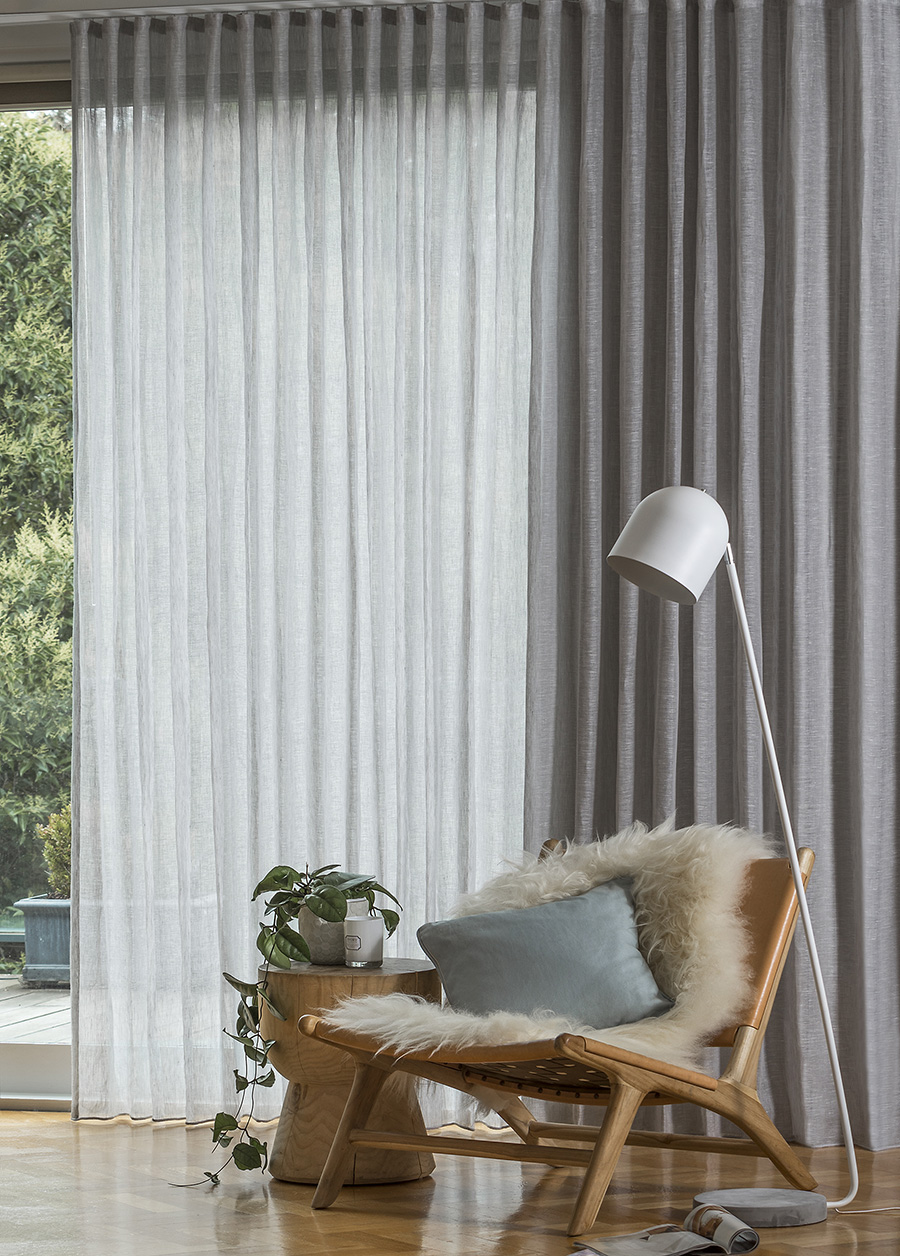
Curtain Design for Bedrooms
When considering bedroom curtains, the challenges seem obvious, but as we’ve already mentioned, additional considerations are also worthy of attention.
With a bedroom, you might like to:
- Reduce or remove distracting street lights and car headlights.
- Completely block the entry of sunlight (especially if you’re a shift worker or have a small child)
- Enjoy natural light when waking.
- Create privacy while retaining natural light, to facilitate daytime dressing, to create a relaxing bedroom haven, or to enable a 24/7 nanna nap.
All these goals are easy to meet – when you know what you’re doing.
If these goals mirror yours, consider supplementing your nighttime curtains with a sheer parallel curtain that remains in place throughout the day.
Sheer bedroom curtains will allow soft light to bathe the room, while beautiful fabric and complementary colours enhance the rest of your bedroom decor. Every bedroom is different, but with careful planning, a phenomenal bedroom can be yours.
Curtain Design for a Child’s Bedroom
Your child’s bedroom curtains need to be kid-customised, as well as safe and practical. We’re only going to introduce these issues here, as our next article will explore the topic in depth.
When we say ”kid-customised”, we’re talking about individualising a child’s bedroom curtains with a focused and very deliberate strategy. Bedroom curtains offer potential for customisation – and kid’s curtains are no exception.
We mention safe curtaining because it’s essential to remove or reduce hazards. Very young children can be vulnerable to hanging and tripping. For older children, ensuring they can safely and effectively operate curtains or blinds becomes important. Even with older teens, if they develop an affection for scented candles or heaters, their safety habits might influence your purchase decisions.
The last issue of practicality is easy to overlook, but kids usually don’t like living in a museum — a beautiful space where ‘Don’t Touch’ and ‘Fragile’ signs abound. Children often punish their bedrooms, along with their curtains and blinds. This is why your child’s bedroom curtains need grit! They need durability and street-smarts – and this is as true for girls as it is for boys.
If you select the right curtain types, will every problem be solved? No, of course not – there are little people involved! But intelligent curtain selection will undoubtedly help.
You might be surprised by the factors and possibilities that exist.
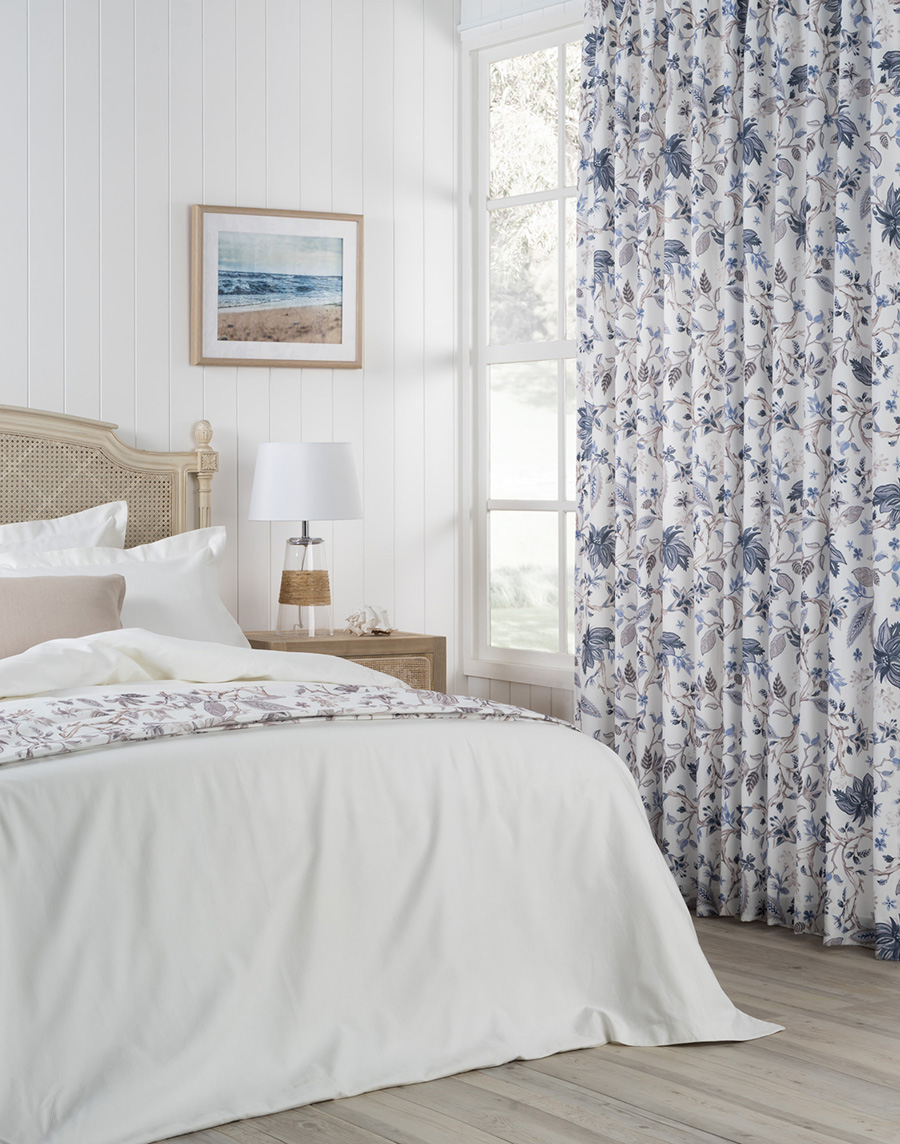
Different Types of Curtains for Different Types of Rooms
We’ve just empowered you with some design goals and focus areas. These can help you make better decisions. We also started to show how different types of curtains work in different kinds of rooms. We’ve looked specifically at bedroom curtains, and even more specifically at kid’s curtains – with more to follow.
We also played with a couple of metaphors as we journeyed together. Firstly, the “Whoops!” moment of badly dressing your child. Unlike curtain blunders, that’s thankfully easy and affordable to correct. We also used the individuality of children to make an important point: you should consider your rooms individually also.
Would you like to invite us into your curtain and blind adventure? We ask good questions and focus on your goals as we weigh the needs of your home, family, lifestyles and more. We also bring a wealth of experience and insight into play. We’ll create a custom quality product that lifts your spirits and uniquely enriches every room. Call 0411 557 622 or request a call by completing the online form.
We look forward to talking!
